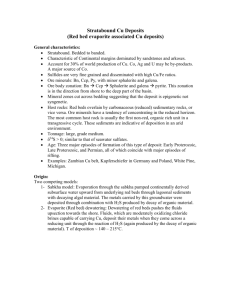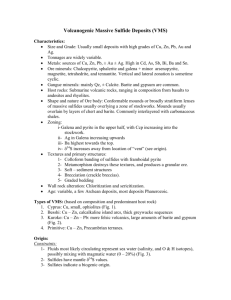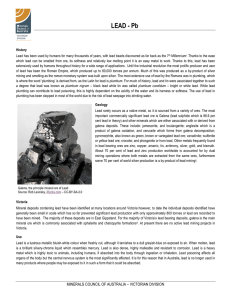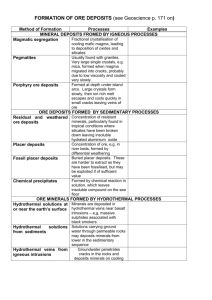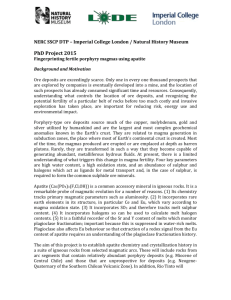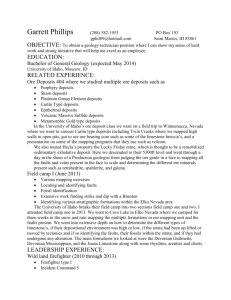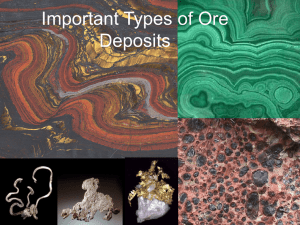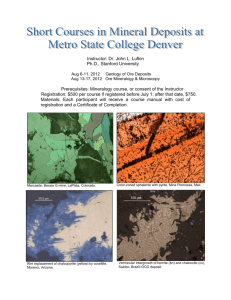Shale Hosted Pb
advertisement
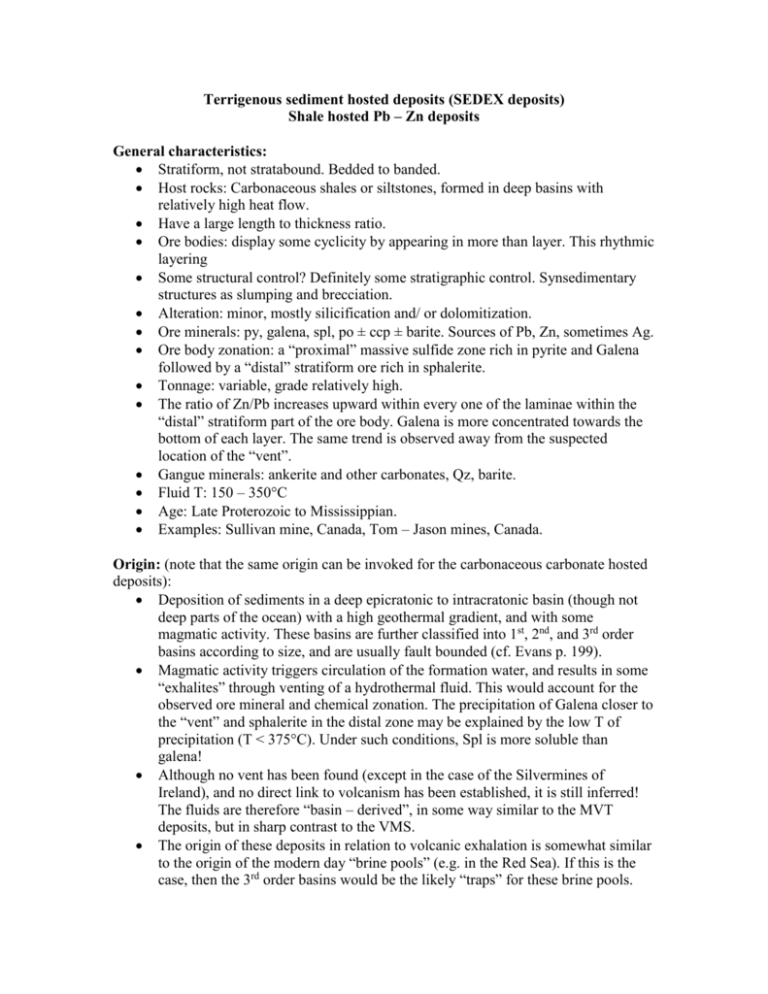
Terrigenous sediment hosted deposits (SEDEX deposits) Shale hosted Pb – Zn deposits General characteristics: Stratiform, not stratabound. Bedded to banded. Host rocks: Carbonaceous shales or siltstones, formed in deep basins with relatively high heat flow. Have a large length to thickness ratio. Ore bodies: display some cyclicity by appearing in more than layer. This rhythmic layering Some structural control? Definitely some stratigraphic control. Synsedimentary structures as slumping and brecciation. Alteration: minor, mostly silicification and/ or dolomitization. Ore minerals: py, galena, spl, po ± ccp ± barite. Sources of Pb, Zn, sometimes Ag. Ore body zonation: a “proximal” massive sulfide zone rich in pyrite and Galena followed by a “distal” stratiform ore rich in sphalerite. Tonnage: variable, grade relatively high. The ratio of Zn/Pb increases upward within every one of the laminae within the “distal” stratiform part of the ore body. Galena is more concentrated towards the bottom of each layer. The same trend is observed away from the suspected location of the “vent”. Gangue minerals: ankerite and other carbonates, Qz, barite. Fluid T: 150 – 350°C Age: Late Proterozoic to Mississippian. Examples: Sullivan mine, Canada, Tom – Jason mines, Canada. Origin: (note that the same origin can be invoked for the carbonaceous carbonate hosted deposits): Deposition of sediments in a deep epicratonic to intracratonic basin (though not deep parts of the ocean) with a high geothermal gradient, and with some magmatic activity. These basins are further classified into 1st, 2nd, and 3rd order basins according to size, and are usually fault bounded (cf. Evans p. 199). Magmatic activity triggers circulation of the formation water, and results in some “exhalites” through venting of a hydrothermal fluid. This would account for the observed ore mineral and chemical zonation. The precipitation of Galena closer to the “vent” and sphalerite in the distal zone may be explained by the low T of precipitation (T < 375°C). Under such conditions, Spl is more soluble than galena! Although no vent has been found (except in the case of the Silvermines of Ireland), and no direct link to volcanism has been established, it is still inferred! The fluids are therefore “basin – derived”, in some way similar to the MVT deposits, but in sharp contrast to the VMS. The origin of these deposits in relation to volcanic exhalation is somewhat similar to the origin of the modern day “brine pools” (e.g. in the Red Sea). If this is the case, then the 3rd order basins would be the likely “traps” for these brine pools.
